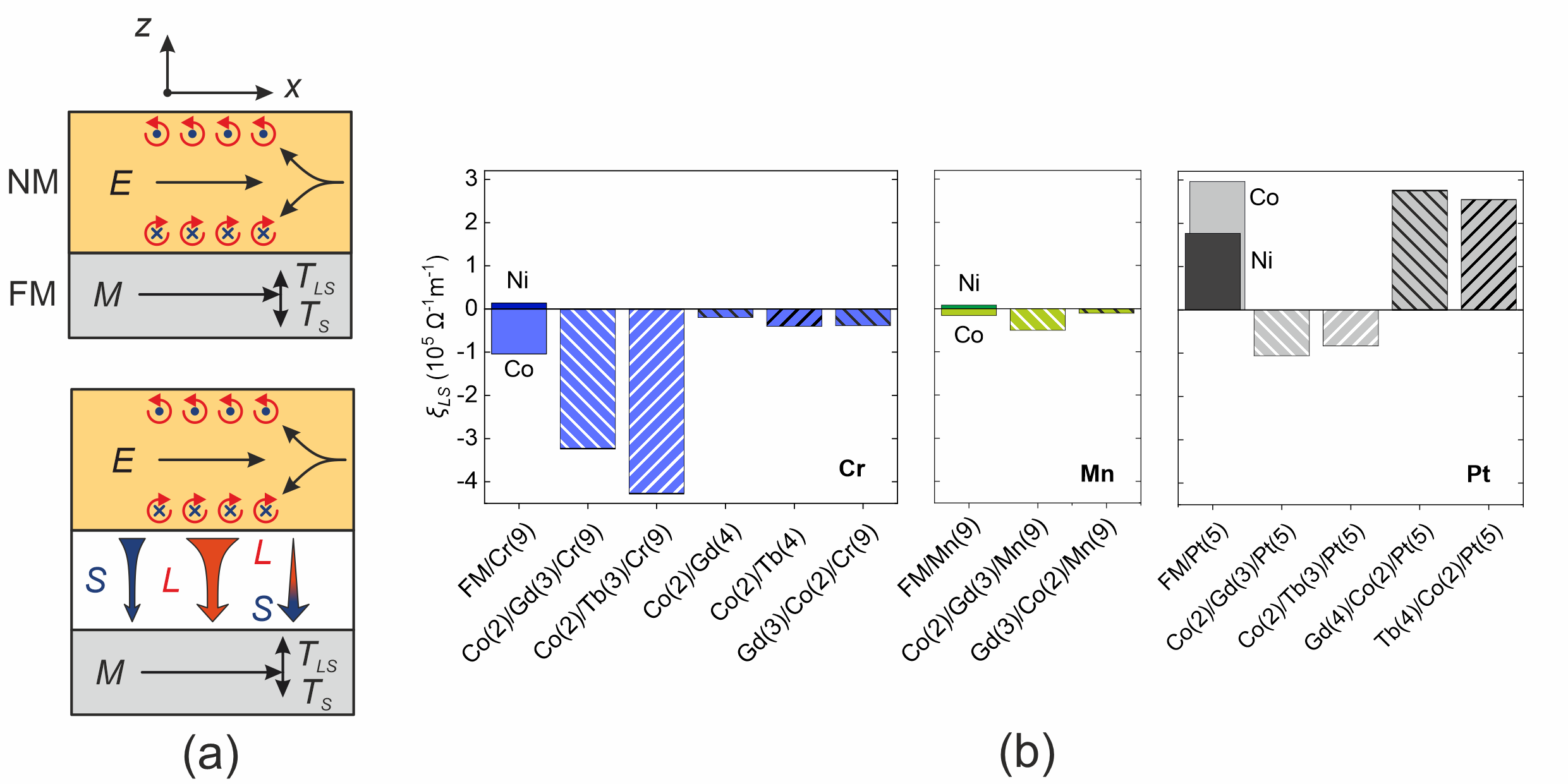Orbitronics
The interconversion of charge and spin currents is central to the understanding of magnetotransport and to spintronic applications, including the generation of spin-orbit torques, the modulation of magnetic damping, and the excitation of spin waves. For a long time, the spin Hall effect (SHE) has been considered as the dominant source of spin currents in materials with strong spin-orbit coupling. Recent theories have proposed an alternative scenario, in which the SHE emerges as a consequence of the so-called orbital Hall effect (OHE). In analogy to the SHE, the OHE converts a charge current into a flow of orbital angular momentum. Yet, this conversion does not require the presence of spin-orbit coupling. Thus, whereas a sizable SHE exists only in heavy metal elements, the OHE is supposed to be a much more common effect. The ubiquity and the large magnitude predicted for the OHE and ensuing orbital torques promise a paradigm change in spintronics and in the modelling of magnetotransport phenomena.
From an experimental point of view, however, the OHE is elusive because orbitals do not couple directly to the magnetization of ferromagnets, differently from spins. In addition, the concomitant occurrence of OHE and SHE in several materials makes it difficult to distinguish the two effects. While recent experiments have found signatures of the OHE in light transition metal systems, key predictions about the OHE and the interplay of the OHE and SHE in metallic heterostructures remain to be verified. In our work we found evidence of giant OHE and orbital torques in heterostructures combining 3d, 5d, and 4f elements and provided a systematic understanding of the interplay of orbital and spin currents in such systems.

Our results not only corroborate the occurrence of a strong OHE in Cr, but also in Pt, which is unprecedented. We verify outstanding signatures of the OHE as a function of type and thickness of nonmagnetic and magnetic layers, and unravel how the OHE and SHE cooperate in metallic heterostructures, reinforcing or weakening each other depending on the relative sign of the orbital and spin conductivities and spin-orbit coupling. Additionally, we show that the conversion of orbital and spin currents can be strongly modulated by inserting a Gd or Tb spacer between the nonmagnetic and ferromagnetic layers, which increases the torque efficiency up to 4 times when Cr is the source of spin and orbital currents and reverses the sign of the torques generated by Pt. Finally, we propose an extension of the drift-diffusion model of spin currents to orbital currents. Our generalized framework reproduces the experimental results and provides a simple analytical tool to model spin and orbital transport in magnetic heterostructures.
We also found evidence of a unidirectional magnetoresistance originating from an orbital current, which we refer to as the orbital-UMR. We studied light metal/ferromagnet bilayers consisting of oxidized Cu and Co, a system with prominent orbital torque effects. By varying the thickness of the ferromagnetic layer and temperature, we find that the magnitude of the orbital-UMR scales linearly with the orbital torque efficiency, supporting a common origin for the two effects. Our measurements also reveal key differences between the orbital-UMR and the UMR induced by a spin current (spin-UMR) in heavy metal/ferromagnet bilayers. In contrast to the spin-UMR, the magnon contribution to the resistance asymmetry is absent in the orbital-UMR of thin Co layers, which suggests that an orbital current does not couple directly to magnons.
Selected publications
- Unidirectional orbital magnetoresistance in light metal/ferromagnet bilayers, S. Ding, P. Noël, G. K. Krishnaswamy and P. Gambardella, Phys. Rev. Res. 4, L032041 (2022). Downloadarticle (PDF, 578 KB)vertical_align_bottom
- Giant orbital Hall effect and orbital-to-spin conversion in 3d, 5d, and 4f metallic heterostructures, G. Sala and P. Gambardella, Phys. Rev. Res. 4, 033037 (2022). Downloadarticle (PDF, 829 KB)vertical_align_bottom
